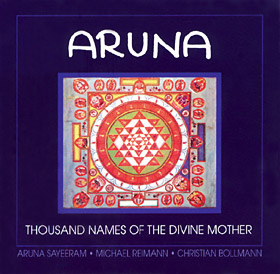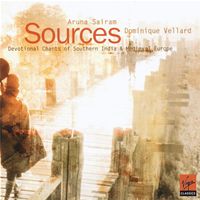Music Performance - Aruna Sairam & Jayanthi Kumaresh
-
With Aruna Sairam, what need is there to equivocate or elaborate? She is one of the most defining and moving voices in the world of music, irrespective of musical genre. And hers stretches from core Carnatic traditions to the multi-dimensional Trialogue collaboration with Dominique Vellard and Noureddine Tahiri. The Saraswati vina player Jayanthi Kumaresh comes from generations steeped in that same South Indian classical system. On the maternal side, the remarkable Carnatic violinist Lalgudi Jayaraman was he uncle and the vina maestro Padmavathy Ananthagopalan, with whom she studied, is her aunt. She also learned from S. Balachander: no contest, the twentieth century’s most maverick and inspiring vainika or vina player. Might be mistaken here. Outwardly, Padmavathy Ananthagopalan seems or sounded like the stronger stylistic influence on Kumaresh’s vina playing. To go idiomatic, her playing, by turns spirited and sensitive, has a definite ‘touch of the Balachanders’. Accompanying them was violinist Jyotsna Srikanth, Patri Satish Kumar on mridangam (double – headed barrel hand drum) and S. Karthick on ghatam (tuned clay pot).
Their opener was a Carnatic concert Kriti staple. (Kriti is a highly-evolved and refined genre of Hindu hymn composition.) Muthuswami Dikshitar, its author and one of the trinity of South Indian saint-poets, is a figure rooted in historicity but wreathe in legend. Sairam explained how he witnessed a drought, inspiring him to compose Anandamrita in ragam amritavarshini. (Dikshitar composed in several language, including a Tamil and Sanskrit admixture called Manipravalam, but a few days later she confirmed it was Sanskrit.) There is a knee-jerk tendency to dismiss art or classical arts a fusty or irrelevant and removed from everyday reality. Especially in this age of overpopulation, climate change and then no-concession desecration of natural resources, how much more ancient and contemporary can any subject get beyond water? Spoiler alert: the happy ending is that when Dikshitar sang it, the heavens opened up and rain bucketed down. Their interpretations melded. The second preliminary piece came from another ‘trinity man’. A low – register start introduced Tyagaraja’s kriti Brova Bharama in Bahudari which built and built in intensity over nine minutes or so.
Mood set, they revealed the concert’s heart: an old-fashioned ragam – tanam – pallavi (RTP). Much of Carnatic music focuses/fixates on laid-down compositions with limited improvisation. The RTP sequence allows spontaneous extemporisation to flow. Using Simhendra Madhyamam as its springboard, it flew with fixed composition and improvised passages including, during the pallavi a delicious refrain by Kumaresh. The sequence allowed every participant to shine. And they did, brilliantly.
The sixteenth-century c.e. composer Oothukkadu Venkata Subba Iyer’s thillana kalinga nartana in ragam Gambhira Nattai concluded. (Thillana is a rhythmic form close kin to Hindustani music’s tarana.) It concerns the Boy Krishna vanquishing Kalinga (more commonly Kaliya), the naga or serpent being king. He tap-danced, foot-stomped and krumped* Kalinga’s multiple heads into submission. This time around, Kumaresh’s rejoinders and passages, while democratic, dissipated the dynamics of Sairam’s solo interpretations of Kalinga Nartana. It was the evening’s one repertoire item to consider rethinking, rejigging or retiring.
Sitting centrally behind the mixing desk, several things niggled about the sound. Especially at first, the vina was too high in the mix compared to the violin, mridangam and ghatam. That imbalance was never entirely sorted out. Part of that is to do with reining in Kumaresh’s volume, not on stage but in the mix, The Sky television transmission should rebalance that. What was delightful was the 2016 Darbar Festival giving a platform to this new and collectively unproven duo. Cornerstones of artistic development remain unorthodoxy within tradition and continuity within transition. Like that of Aruna Sairam and Jayanthi Kumaresh. But in order to do that, musicians need to be given a chance to prove themselves like this duo did. Like Darbar did.
Related Albums

Aruna - Thousand Names...
Published : 1995
By : Lichthaus Music...
Trialogue
Published : 2012
By : Glossa Music
Sources
Published : 2000
By : EMI Records / Virgin Classics - France
Related Concerts
- Lalitha: The Divine Mother with a 1000 Venerable Names
On : Saturday, July 7, 2012 - Divine Rhapsody
On : Friday, August 31, 2012 - Ojai at Berkeley - Cal Performances 2017
On : Saturday, June 17, 2017 - A Jazz-Carnatic Collaboration
On : Friday, March 25, 2016
